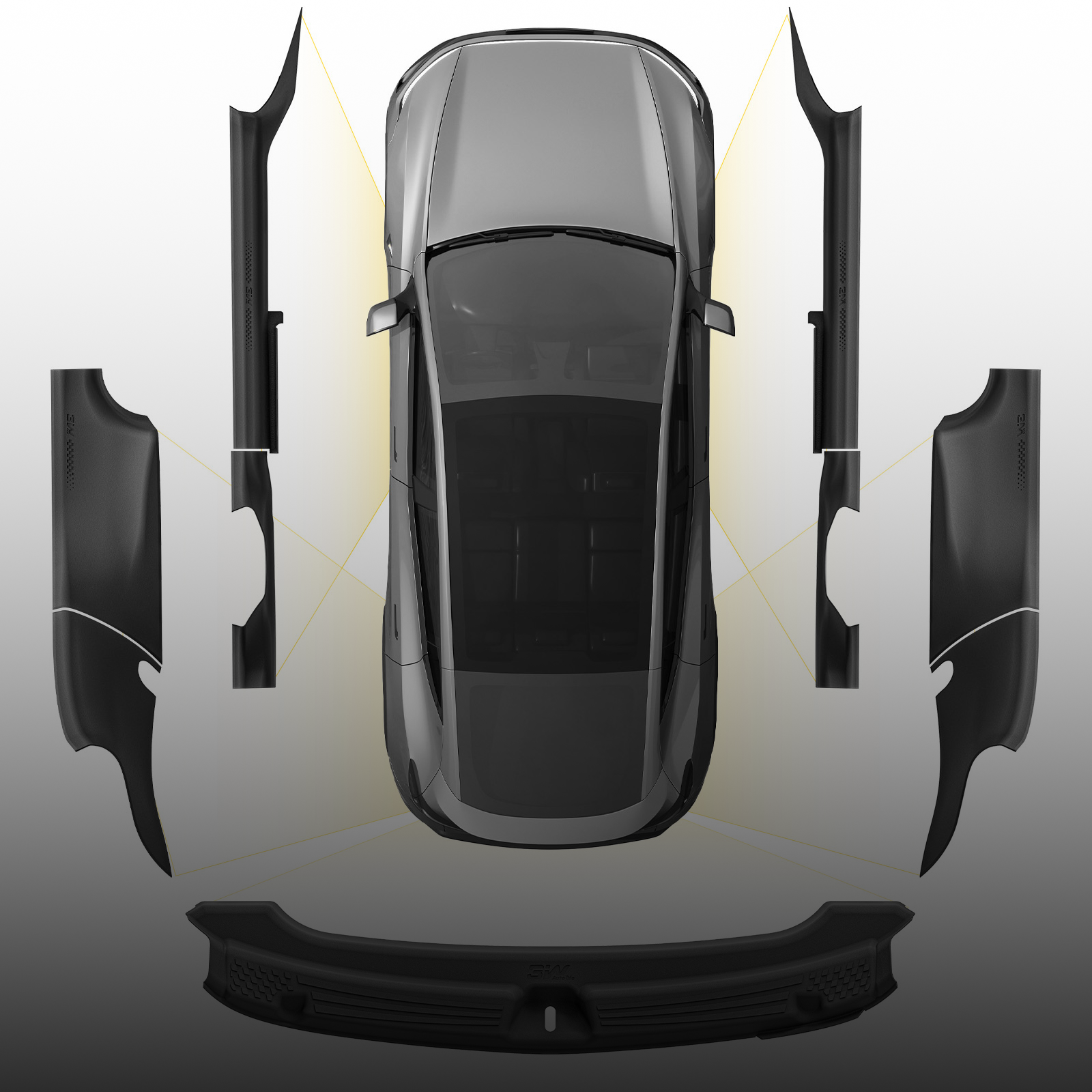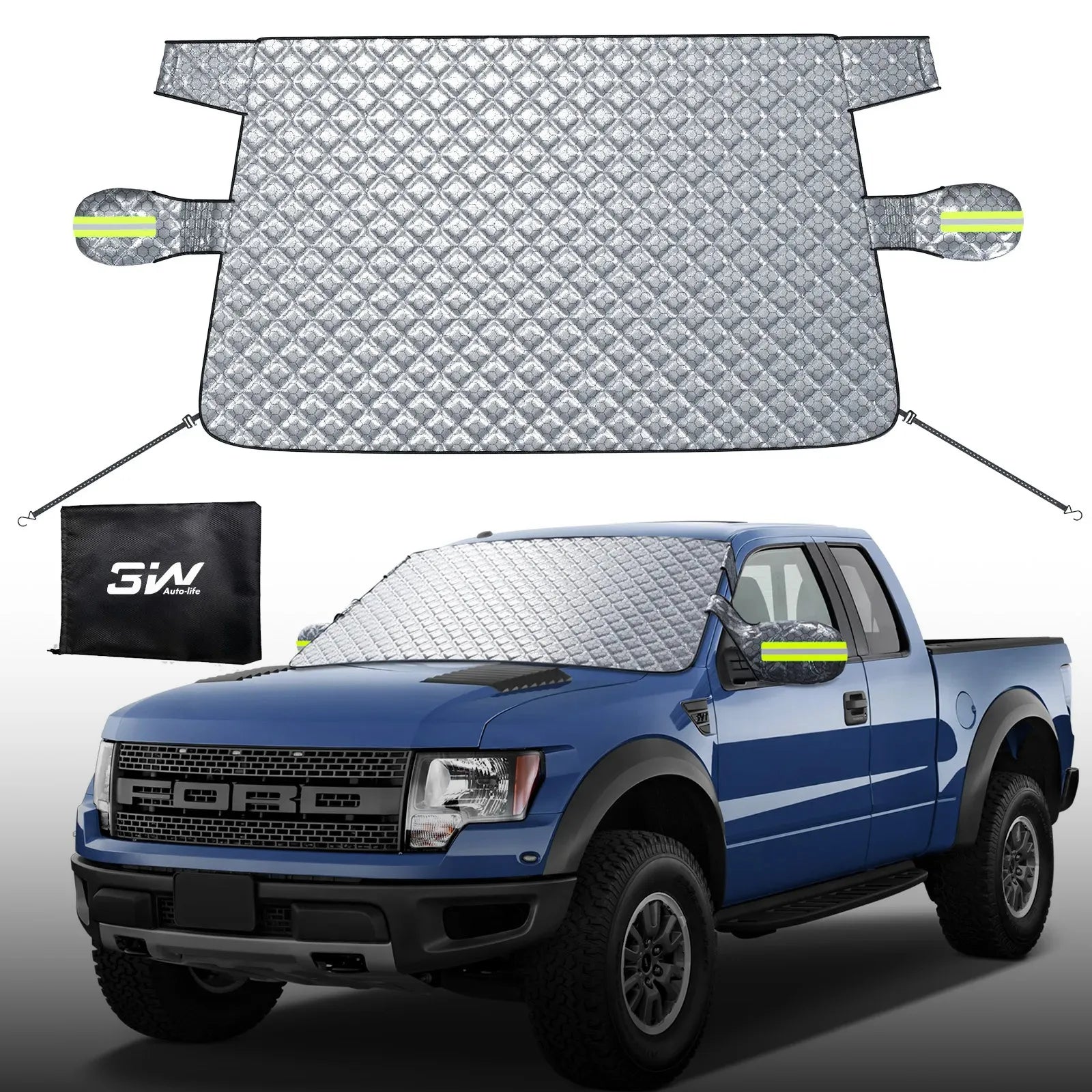

Car camping feels like a perfect blend of outdoor adventure and all-natural convenience. However, packing every essential in an orderly manner can make a noticeable difference in your experience.
This guide enlists everything you need for a smooth and enjoyable car camping trip. From must-have gear to safety tips, a worthy checklist can keep you well-equipped for every outdoor adventure.
Table of contents
What is Car Camping?
It’s synonymous with exploring nature using your vehicle as shelter out in the wild. Traditional backpacking requires you to buckle up everything on foot. Meanwhile, car camping is all about enjoying a flexible stay in the wild.
Assemble your essentials in the car, drive to a campsite, and set up a resting place. That’s all it takes. You can pitch a tent next to the car or convert the SUV into a makeshift sleeping area. Such actions can balance comfort with the thrill.
Why is Car Camping Becoming So Popular?
- Convenient Access: Almost anyone can plan and execute a car camping trip. You pack more essentials at once. That’s why you don’t have to worry about quantity or weight.
- Familiar Comfort: Even in outdoor settings, people look for a somewhat familiar stay. Car camping lets you sleep in a confined space. The foods remain organized and accessible.
- Budget-Friendly: Outdoor accommodation can become expensive in tourist seasons. Car camping offers a budget-friendly stay. Public lands, campgrounds, and dispersed areas provide zero to low-cost options.
- Increased Flexibility: You can almost instantly adjust or alter car camping plans. Campers can change the location based on weather conditions and personal preferences.
- Gateway to Adventures: Car camping doesn’t mean staying close to the vehicle all the time. You can still participate in hiking, fishing, kayaking, and stargazing. Adventurers can embrace nature based on availability and preference.
- Social or Solo: Car camping seems perfect for both group outings and solo retreats. You can bring family and friends for enjoyment. Alternately, lone travelers can explore the wilderness without compromising safety.
How Car Camping Differs from Backpacking and RV Camping?
You can go camping in many forms, like backpacking or RV camping. Each offers distinctive experiences and benefits against concerning limitations. Choose the approach that suits your needs.
Accessibility
Car camping allows travelers to drive directly to campsites. It provides easy access to gear and supplies. Backpacking involves hiking to a campsite while carrying all necessary gear on foot. It limits access to distant areas but offers a deeper connection with nature.
RV camping involves traveling in a self-contained vehicle with built-in living quarters. It grants access to designated campgrounds with hookups while restricting off-road adventures.
For example, car camping allows you to park at a designated site within a national park. A backpacker, however, may need to hike for miles into the wilderness to reach a remote camping area. Meanwhile, an RV traveler has to rely on campground availability.
Convenience
Car camping offers a balance between comfort and adventure. Campers can sleep in their vehicles or set up tents nearby. Backpacking involves minimal gear due to specified weight restrictions.
It results in a more rugged experience with simple sleeping arrangements. RV camping holds the highest level of comfort. You can enjoy easy access to beds, bathrooms, a kitchen, and climate control.
For instance, car camping lets you rest comfortably in your vehicle during road trips. Backpackers have to rely on lightweight sleeping pads. In contrast, RV campers enjoy full amenities on extended trips.
Budget Considerations
Car camping is highly affordable as it only requires basic camping gear without specialized equipment. Backpacking seems budget-friendly as well.
You may need high-quality gear, such as ultralight tents. RV camping is the most expensive option due to vehicle maintenance, fuel, and campground fees.
For example, car camping allows anyone on a budget to enjoy nature at minimal costs. Backpacking is more economical with some investments in quality gear. RV camping demands a higher financial commitment.
Setup and Packing
Car camping feels easy with ample storage in the vehicle. Campers can bring extra comforts like foldable chairs, coolers, and cooking gear. However, backpacking requires strategic packing with lightweight essentials. RV camping includes built-in storage. You may still need to plan for pre-trip power, water, and fuel supplies.
For instance, car camping allows you to bring extra gear to hang out with friends. Backpackers must carefully pack only the necessities. RV campers enjoy the convenience of built-in storage during prolonged trips.
How to Car Camp: A Beginner’s Guide to Getting Started?
Step #01: Choose the Right Vehicle
The vehicle serves as both your mode of transportation and your shelter. Selecting the right type is obligatory. The best vehicles for car camping would be –
- SUVs and Crossovers: Spacious, often equipped with foldable seats for sleeping.
- Vans and Minivans: Perfect for converting into a camper with minimal effort.
- Pickup Trucks: Great for carrying gear. A truck bed can be turned into a sleeping space.
- Sedans and Hatchbacks: They work for solo travelers, but space may seem limited.
Essential Preparatory Tips
Keep your vehicle in good working condition. Check oil levels, tire pressure, and battery. Also, clean and organize the interior for comfort. Consider window coverings or sun shades for added privacy and insulation.
Step #02: Select a Campsite
Choosing the right location can severely impact your overall experience. Available campgrounds can be of different types, including –
- Designated Campgrounds: Equipped with facilities like bathrooms, fire pits, and picnic tables.
- Dispersed Camping (Public Lands): Free options in national forests and BLM areas without amenities.
- Rest Areas and Parking Lots: Some allow overnight parking. Always check the regulations first.
Key Considerations
Research campsite rules (for permits or reservations). Look for a well-drained area to park. Avoid wildlife-sensitive zones or flood-prone regions. Choose spots near water sources at safer distances.
Step #03: Packing Essentials
It’s impossible to enjoy your stay out in the wild without supporting gears. The essential items based on their specific categories are listed below:
- Sleeping arrangements.
- Storage for food.
- Cooking setups.
- Satisfactory lighting.
- Power supply.
- Personal safety.
- Hygiene requirements.
Step #04: Organize Car Space
You must allocate the available interior space efficiently. Proper organization of things can make every item accessible yet secure.
- Storage Tips
Get plastic bins or collapsible organizers to put away your gear. Keep flashlights, snacks, and maps within immediate reach. Always pack the heavy items beneath the lightweight ones inside the car.
- Ventilation Tips
Keep the car windows slightly open for uninterrupted airflow. Don’t forget to apply mesh screens to expel bugs and insects. Install battery-powered fans or window covers to regulate the temperature.
Step #05: Setting Your Camp
A steadfast and reliable setup can save you from unwanted incidents. You should stick to –
- Station the car on a level surface.
- Arranging space before dark.
- Keeping food in airtight containers.
- Responsible for the disposal of wastes.
You don’t want family, colleagues, or friends to worry about your whereabouts by –
- Informing someone of your travel plans.
- Always keep emergency contacts handy.
- Avoid camping too close to roads or isolated areas.
Car Camping Checklist: What to Pack for Every Adventure?
Packing for a car camping should hold a balance between necessity and comfort. Some items are essential. Meanwhile, others are optional and can significantly push your experience.
A. Sleeping Gear
- Sleeping bag.
- Sleeping pad (inflatable mattress) with cushioning.
- Camping pillow.
- Sunshades or privacy screens.
- Bug net or insect repellents.
B. Cooking (Food Supplies)
- Portable stove or campfire grill.
- Fuel or propane.
- Reusable plates and cookware.
- Knives and culinary tools.
- Canned goods, granola bars, nuts, and dried fruits.
- Water bottles.
- Trash bags.
C. Emergency Kit
- First aid kit with basic meds.
- Flashlights or headlamps.
- Extra batteries.
- Maps or GPS.
- Fire extinguisher for cooking.
- Emergency blankets.
- Jumper cables.
- Spare tire, jack, and toolkit.
D. Hygiene
- Biodegradable wipes.
- Toilet paper or tissues.
- Hand sanitizer.
- Change of clothes.
Optional Yet Useful Necessities
Some items can induce further comfort, entertainment, and convenience. You can skip or bring these items – that’s up to you.
- Foldable camp chairs and portable tables for a relaxing setup.
- A portable power bank or solar charger to charge your devices.
- Hiking boots and trail map to explore trails near the campsite.
- Camera or dash cam for capturing stunning scenery anywhere.
- Firewood and fire starters for campfires in permitted areas.
- Weatherproof tarp for shade to protect against unexpected rain.
- Extra fuel or emergency gas canister on long trips in remote areas.
Enhancing Your Car Camping Experience with 3Wliners
Car camping is all about convenience, organization, and comfort. The right gear makes a huge difference in everything. And 3Wliners has several products to improve your setup.
3W Eco Soft Pack Insulated Cooler
Keep food and drinks cold without buying ice for refills. This cooler provides long-lasting thermal efficiency. Your perishables stay fresh throughout the trip.
A cheap or no cooler on a trip can make your food soggy or spoiled. The built-in thermal lining of the 3W Eco Soft Pack Insulated Cooler keeps your food cold for extended periods.
The water-resistant inner lining helps retain freshness and hygiene. Also, you can ensure dry storage without leaks, condensation, or frequent ice refills.
The soft-pack design can hold 48 cans + ice while consuming minimal space. Its ergonomic strap allows effortless movements from the car to your campsite.
3W Folding Storage Box
A cluttered car can make camping a frustrating experience. However, the storage box allows you to organize everything efficiently. Your packed items remain accessible yet protected.
The camping seems burdensome without properly organized items. Loose items shift around while driving. Even the food, tools, and clothes get mixed.
3W storage box can fold flat to maximize your space. It expands into a 50.5L container to organize your essentials. Multiple compartments keep food, tools, and personal items separate.
Its clutter-free arrangement also prevents dust, moisture, and accidental spills. You can carry or stack several boxes with their stackable design and secure handles.
Simple wiping or hosing down should restore the cleanliness. 3W liners feature non-toxic materials to repel odors and microbes. Proper cleaning should suffice for these mats.
3W Car Mats and Floor Liners
Camping may involve mud, dirt, and spills to ruin your vehicle’s flooring. The mats and floor liners provide all-weather protection to keep the vehicle damage-free.
Dirt, mud, spills, and moisture from the campsite can turn the car interior into a mess. Campers become frustrated with the extensive cleaning required to deal with such issues.
Fully waterproof and stain-resistant 3W Floor Liners can protect your car’s flooring. Durable built from the core can handle all kinds of terrains and weather conditions.
Conclusion
Car camping can embrace the freedom and flexibility of travel. Staying prepared from the start can make the journey comfortable. Each step involved in the preparatory process contributes to a smoother and more enjoyable experience. Follow the structured checklist to organize essentials efficiently. Likewise, you can deduct or add some more items to the list based on your destination.
Frequently Asked Questions (FAQs)
- How to car camp efficiently?
Efficient car camping comes down to organization, preparation, and comfort. Optimize storage and plan to pack smartly.
- Where can I sleep in my car legally?
Legality depends on local laws. Some common locations for overnight car camping include:
- Designated campgrounds.
- BLM lands and national forests.
- Rest stops and truck stops.
- Retail parking lots.
- City and countryside spots.
- Do I need to crack a window to sleep in my car?
Yes. It’s recommended to crack a window while sleeping in your car slightly. It promotes airflow while preventing condensation from building up.

